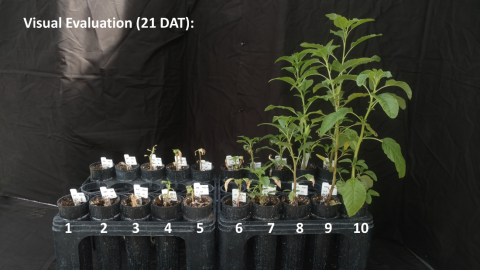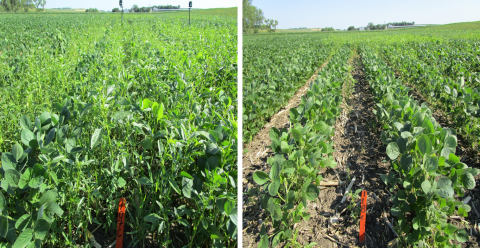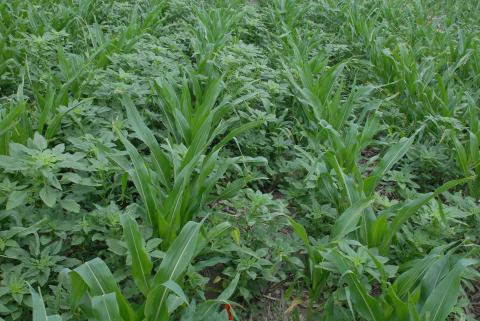Pollen-Mediated Gene Flow and Transfer of Herbicide-Resistant Alleles
January 22, 2019
Pollen-mediated gene flow at a distance could allow the spread of rare herbicide-resistant alleles and favor the evolution of multiple herbicide-resistant biotypes through the accumulation of different resistant genes in an individual weed or weed population. From the Nebraska Crop Management Conference Proceedings.
Research Report: Prevalence and Mechanism of Atrazine Resistance in Waterhemp from Nebraska
October 26, 2018
Researchers studied waterhemp populations in eastern Nebraska to evaluate the efficacy of PRE and POST herbicide applications and the mechanism of atrazine resistance. Here's what they found and take-home messages to apply to your operation.
Weed Science School Oct. 31 near Mead
October 11, 2018
Update your weed science knowledge and skills when university, government, and industry speakers join to address current weed science issues and recommendations for improving herbicide applications.
Preemergence Herbicides Delayed the Critical Time for Weed Removal in Soybean
May 16, 2018
Researchers tested two herbicide strategies in soybean to see how preemergence herbicides would delay the critical time of weed removal, likely reducing the number of herbicide applications needed in a season.
The Rise of Multiple-Resistance in Nebraska’s Weeds and Effects Of Dicamba Micro-Rates on Sensitive Crops
January 8, 2018
An article from the Proceedings of the 2018 Nebraska Extension Crop Production Clinics on how to diversify weed control methods and modes of action to reduce potential development of resistance.
Herbicide-Resistant Kochia, Palmer, and Waterhemp in the Panhandle: Distribution and Management
January 8, 2018
Several field trials were undertaken in 2017 to look at options for controlling herbicide-resistant kochia, Palmer amaranth, and waterhemp in dry bean, corn, and sugarbeet. In addition over 80 kochia, Palmer amaranth, and waterhemp plants were collected for testing of herbicide resistance. Of these 50% of kochia and 13% of Palmer amaranth plants tested were resistant to field rates of glyphosate. While options are limited in the Panhandle, pairing crop rotations with herbicide programs using PRE and layby treatments provided effective control of key weed species. An article from the Proceedings of the 2018 Nebraska Extension Crop Production Clinics.
Low Temperature and Frost May Affect Efficacy of Burndown Herbicides
November 9, 2017
In many areas fall herbicide applications were delayed due to the late harvest. Applications can still be effective, depending on weeds present, temperature, rate of herbicide and additives used. The article offers recommendations for these late-fall applications and their importance, particularly for control of herbicide-resistant marestail.
Grower Q&A: Is this Herbicide-Resistant Palmer Amaranth?
June 23, 2017
This week growers facing challenges with Palmer amaranth questioned whether it was due to the product, the environment and lack of rain, or a resistant weed. Several factors could be at play, notes a UNL weed scientist, who recommends starting with preemergence herbicides with residual activity to get the best control.





